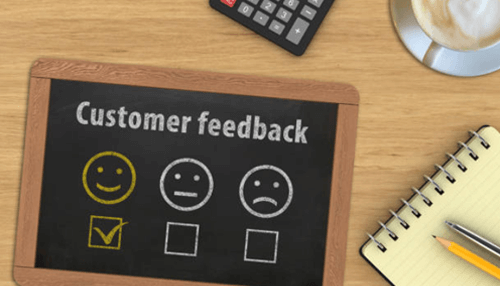Top firms today are those that anticipate client needs and are highly responsive to customer feedback. As a result, consumer insights have become the holy grail in business. Every firm now eagerly gathers feedback, often leading them to flood the hapless consumer with survey after survey.
Ironically, the tool that they use to improve service might set them back. According to Forrester, alienation due to survey overload increases the analytics effort by 20%.
Forrester goes on to say that firms will increasingly invest in passive feedback methods. There are several methods of doing this. Companies might start by analyzing customer service calls and picking up common threads in complaints.
Progressive firms will take this a step further by training their call center employees to ask thoughtful questions. According to Daria Leshchenko, CEO of the industry-leading call center outsourcing company, https://supportyourapp.com, this passive information gathering method is highly effective. Under the guise of providing friendly service, employees may learn much.
In this article, we’ll discuss what survey overload is and how to prevent it. We’ll then cover how to get reviews from clients without annoying them.
Gathering Feedback Painlessly and Beating Survey Overload
Why is it important to get customer feedback?
Companies cannot assume that they’re doing everything correctly. They must collect data from their clients to ensure that they are.
Considering Forrester’s findings, firms may wonder, “Why is it important to get customer feedback?” They may feel that clients would complete surveys if they were important to them. It seems like a solid argument until you realize the importance of survey overload in today’s society.
What is Survey Overload?
Survey overload or fatigue occurs because clients find surveys tedious. There are three reasons this may occur:
- Too many surveys: Clients are overwhelmed by numerous requests for feedback. They may previously have been happy to complete one or two surveys. Now the sheer volume makes them wonder why they should waste their time for no reward.
- Poorly designed surveys: The questionnaire itself may be problematic for clients. Having too many fields, open-ended answers, and repetitions may prove off-putting for respondents. They’ll leave the survey without completing it.
- They don’t feel anyone takes note: If a client provides feedback and nothing seems to change, they’ll feel it’s worthless to do so in the future.
How to Obtain Customer Feedback More Effectively
Firms should reconsider how they gather feedback. First, they should consider surveys as a supplementary source of insights, not the primary one.
They may instead gather data by:
- Recording calls from clients and analyzing what they say
- Training your call center to ask leading questions to obtain insights
- Keeping track of mentions and reviews on social media and review sites
How to Design Better Surveys
Occasionally, a survey is the best option. Carefully designed, targeted surveys sent sparingly are more likely to be well-received. Firms may incentivize the completion of the questions by offering discounts or a gift.
Keep the design clear and clean.
– Use Clear, Simple Questions
Asking straightforward questions makes it easy for the respondents to know what information you want. Make sure to use plain language that’s not ambiguous. Firms should steer clear of open-ended questions where possible.
– Stick to One-Part Questions
Two-part questions are more challenging to answer. They may make respondents feel that there’s too much work to do. Respondents should be able to respond without thinking too hard.
– Use Mutually Exclusive Answers
Multiple choice answers are simpler for consumers. Firms should take care not to allow responses to fall into two or more options. Say, for example, that one question is how much clients spend on groceries a month.
Narrowing it down to several ranges makes it easier for clients. It might look something like:
a) $100 to $300
b) $300 to $600
c) $600 to $900
d) Over $900
Take a closer look at the ranges above. Can you spot the mistake?
If a consumer spends $300 a month on groceries, do they choose (a) or (b)? Both answers are correct because neither range is mutually exclusive. The following example makes it far clearer.
e) $100 to $200.99
f) $300 to $600.99
g) $600 to $900.99
h) Over $900
Final Notes
Companies must collect feedback to ensure that they stay relevant in the market. Data collection must be approached carefully, inconveniencing the client as little as possible. Passive data gathering, punctuated with occasional, well-designed surveys, provide the best results.



